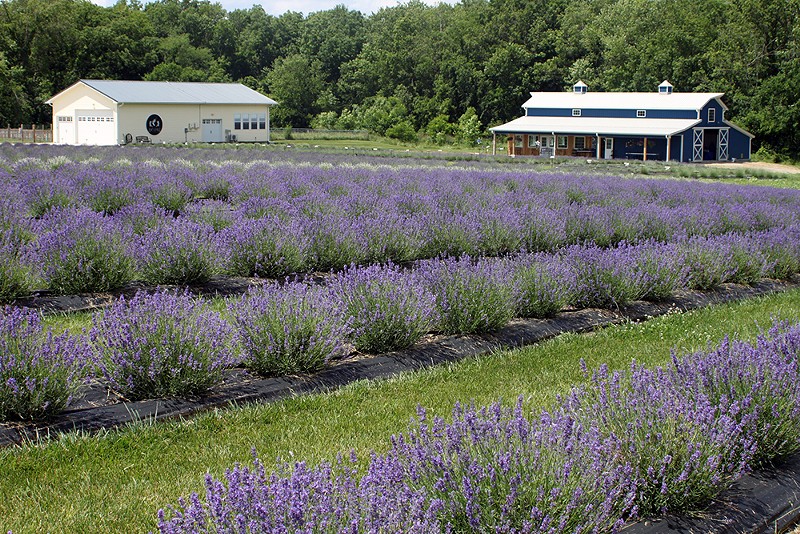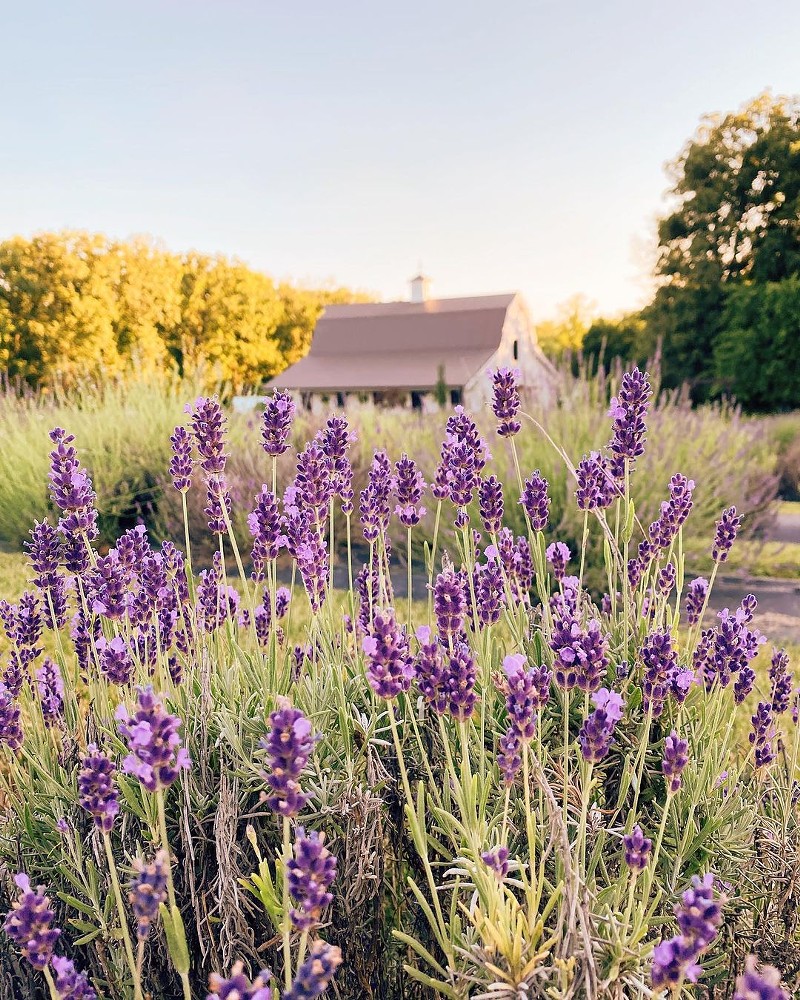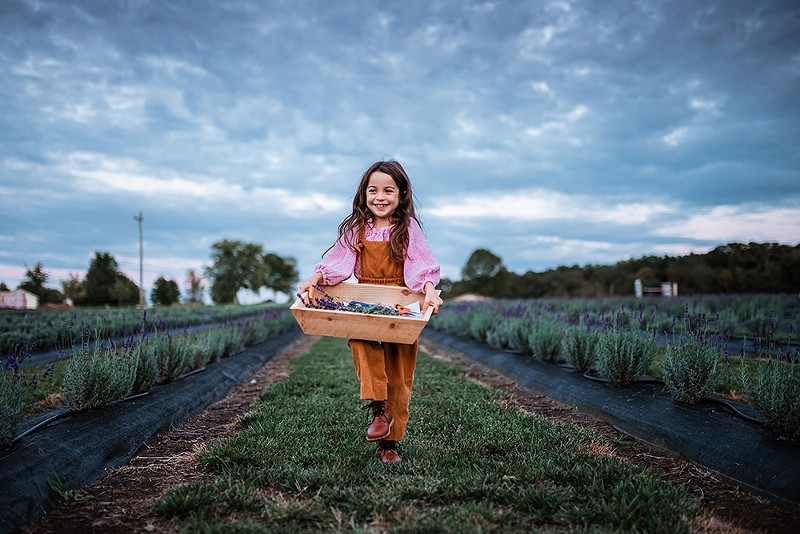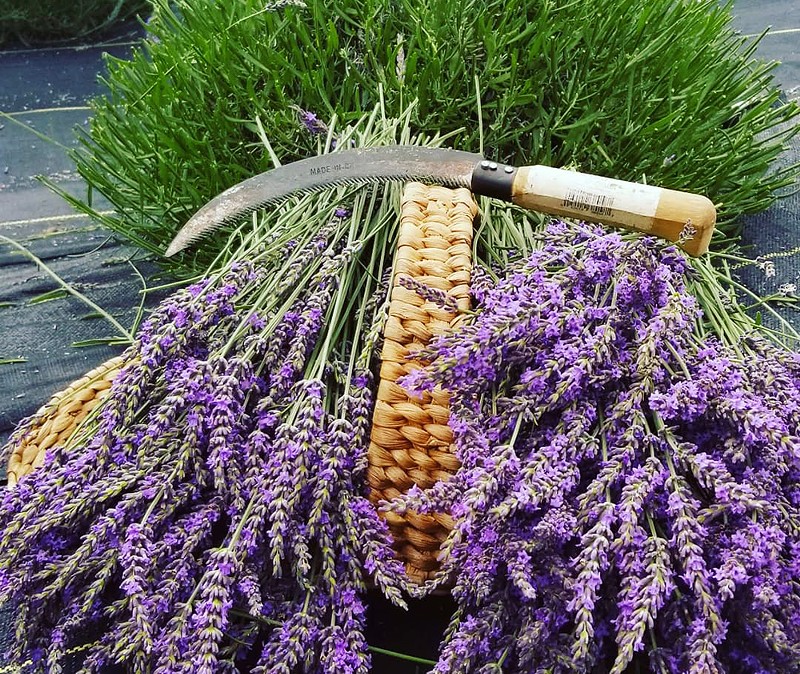
Courtesy Battlefield Lavender
Battlefield Lavender in Centralia has about 4,200 plants as of May 2020, up from 300 in its first year in 2016.
The iridescent purple flowers wave gently along with the breeze. Acres of long rows of lavender sprout from sun-warmed soil in its characteristic plume.
“Every time the wind blows, it rustles the foliage and the stems and the buds,” Katie Lockwood says. “It releases oils that are in the plant, and the scent just is all over the field. It’s incredible.”
Just that sight is idyllic enough, but toss in a rustic barn, honeybees, blackberries and elderberries and wildflowers, and it’s straight out of a romantic afternoon in the south of France.
But these sprawling violet fields aren’t in Provence. They’re straight up Midwest.
“We have had folks visit here from France, actually,” says Lockwood, who owns and runs Battlefield Lavender in Centralia with her husband, Jason. “They're always shocked that we're even able to grow it here. They actually look around for a second in a little bit of disbelief like, ‘Is this really happening? Am I in Missouri, and there's actually lavender in the ground?’”

Courtesy Long Row Lavender
Long Row Lavender in Wright City, Missouri, not only grows lavender but also has a gift shop and events space.
Truly, it’s not Provence. The fields look different with rows of fewer plants. Regional farms tend to be smaller, single-family run operations. Farms here require techniques and soil amendments different from their counterparts across the pond since the Mediterranean plant isn’t native to the region and — just like the rest of us — doesn’t care for humidity or wet feet.
Still, there’s fields of purple flowers and farmers making their livelihoods from lavender. It’s all a stone’s throw away from St. Louis, which makes the commute a touch shorter than the at-best nine-hour flight. Battlefield Lavender (20601 N Rangeline Road, 573- 227-2242) — which bills itself as the largest operation in the state — is about two hours by car from St. Louis, and there are closer options. Long Row Lavender (26549 South Stracks Church Road, 636-699-0690), is only about an hour away in Wright City, Missouri, and Tenderloin Farms (6368 St James Drive, 618-917-0188) is a mere 40 minutes away in Edwardsville, Illinois. There are others, too.
It feels like something of a nexus, which begs some questions. How did lavender-growing come to the region? Why would farmers decide to stake their livelihoods on a plant best grown in sandy soil so unlike the Midwest’s clay? Also, is there truly any business sense in this?
Tenderloin Farms, now run by sisters Kim Hansen and Kris Straub, started in the Edwardsville area in the 1850s. Over the years, the farm has raised dairy cows and hogs and grown everything from corn to soybeans. In 1999, their father sold the hogs and ever since then it’s been “plants, plants, plants, plants, plants,” Hansen says.
After their father died in 2016, Hansen and Straub, who had non-farming careers but are now semi or fully retired from them, took over.
“It just wasn't going to be my thing to ride a tractor a couple times a year,” Hansen says, describing how she read an article on growing lavender and was quickly sold on the idea.
Even with their farming background, Hansen describes the “big learning curve” in making lavender work. She’s not alone.
Lockwood recalls the challenges of the early years, putting in the wrong variety of irrigation system and having to tear it all out to start again. Then there were the soil amendments needed, which have added up to six semi-trailer loads of horse manure and hay over time. It’s paid off and as of May 2020, Battlefield Lavender has about 2,400 plants up from 300 in its first year in 2016.
“We started with 20 plants, and they did really well that first summer — and then they all died that winter,” says Long Row Lavender co-owner Tracy Smith with a laugh. “The public was so excited about lavender and essential oil and products that you can make with the lavender essential oil. So that really just kind of spurred us on.”
Long Row Lavender began as a small hobby farm in 2009. Now they’ve grown to 1,000 lavender plants in addition to daffodils, peonies, zinnias, sunflowers and Mexican sage on about an acre of land. They’ve expanded in response to customer requests and built a gift shop with an attached events space and a café.
While Smith’s husband, Chad, works as a physician, the farm is her full-time gig, so it’s important that it be financially viable. Long Row Farms has a robust model that includes the lavender itself, goods and gift items, and classes and workshops. It’s also open year-round to the public, who can visit the café and walk the flowered grounds.

Courtesy Battlefield Lavender
Midwestern lavender fields aren't exactly like their counterparts in Provence, but they have their charms.
At first, Tenderloin Farm’s revenue mostly came from farmer’s markets. But then they put in 380 plants into a you-pick-it patch, which is open beginning Friday, June 3. Like Long Row Lavender, they make products, including lavender oil and hydrosol (a lightly lavender water that’s actually a byproduct of the distillation process), soaps, lavender eye pillows, bath bombs and shower steamers. They also sell plants.
“Not saying Lowe's doesn't do a great job,” Hansen says. “I think, you know, they buy in mass, and we try to say, “Yeah, we've had luck with this variety sitting here.”
Battlefield Lavender does a brisk business at the Columbia Farmer’s Market, and Lockwood and her family makes about 200 different products to sell. They also open their doors to visitors from year-round and offers you-pick-it during June. It’s $6 to pick but free for those 12 and under.
All that said, farming, even lavender farming, is ever an unpredictable business. But the tiny flowers have cast a sensory spell that neither visitors nor growers can resist.
“I'm always a little surprised how much I still really deeply love it,” Lockwood says. “I think it just brings a lot of joy to my heart to have that scent around me.”






